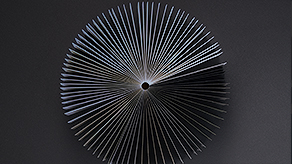China’s Anti-Circumvention Practice and Legislation
China’s Anti-Circumvention Practice and Legislation
China has been actively strengthening the legal framework and practical implementation of its trade remedy system. Against the backdrop of increasingly complex international trade, circumvention activities that undermine the effectiveness of trade remedy measures have become a growing concern. Recently, China has initiated the process of anti-circumvention legislation and issued the first determination in an anti-circumvention investigation.
This article examines China’s anti-circumvention legislation and its first determination to elaborate on the logic and key issues underpinning China’s anti-circumvention regime.
1. China’s Anti-Circumvention Legislation and Practice
1.1 Legal Basis
China’s anti-circumvention legislation is primarily grounded in the Foreign Trade Law of the People’s Republic of China (“Foreign Trade Law”), the Tariff Law of the People’s Republic of China (“Tariff Law”), and the Anti-Dumping Regulations of the People’s Republic of China (“Anti-Dumping Regulations”).
Article 36 of the Foreign Trade Law provides that the Ministry of Commerce (“MOFCOM”) may, independently or jointly with other relevant departments of the State Council, conduct investigations into acts of circumventing foreign trade remedy measures in accordance with the law. Article 49 further specifies that the State may take necessary anti-circumvention measures to address such circumvention acts.
Article 54 of the Tariff Law stipulates that the State may adopt anti-evasion measures, such as adjusting customs duties, to counteract commercially unjustifiable reductions in the amounts of payable duties.
The Anti-Dumping Regulations also contain relevant provisions. For example, Article 55 mandates that MOFCOM may take appropriate measures to prevent acts of circumventing anti-dumping measures. These laws and regulations establish a fundamental legal framework for China to conduct anti-circumvention investigations and implement corresponding measures.
1.2 Rules on Anti-Circumvention Investigations of Trade Remedy Measures (Draft for Comments)
MOFCOM has released the Rules on Anti-Circumvention Investigations of Trade Remedy Measures (Draft for Comments) (the “Draft Rules”)[1] and solicited public comments thereon.
In the Draft Rules, MOFCOM adopts a legislative logic consistent with that of other ministerial regulations governing trade remedy investigations and outlines the procedural and substantive conditions and requirements for conducting investigations and implementing anti-circumvention measures. In short, any change in product exports or trade patterns to China in a way that weakens the effectiveness of the trade remedy measures these exports or patterns concern constitutes circumvention.
1.3 Affirmative Determination in the First Anti-Circumvention Investigation
On March 4, 2025, MOFCOM launched the first anti-circumvention investigation (the “Optical Fibers Investigation”), which targeted imports of certain cut-off wavelength shifted single-mode optical fibers (G.654.C fibers) originating from the United States. A domestic producer alleged that U.S. optical fiber producers and exporters, leveraging the high compatibility, similarity, and mutual substitutability among different fiber models, had altered their business practices to export substantial quantities of a fiber model outside the scope of products subject to the existing anti-dumping measure—thereby circumventing such measure.
The investigation confirmed that, in recent years, the volume of imports of U.S. products subject to the anti-dumping measure has decreased significantly, while the volume of the investigated products (G.654.C fibers) not subject to the anti-dumping measure has surged sharply. Under the impact of such circumvention activities, the remedial effect of the existing anti-dumping measures has been undermined. Consequently, the authority resolved to expand the scope of products subject to the anti-dumping measure to include the new G.654.C fiber model.
2. Analysis of Key Issues in Legislation and Practice
2.1 Types of Circumvention and Changes in Business Practices
The Draft Rules identify the following types of circumvention:
Processing and assembly in China: Assembling products subject to the measure in China using imported components or raw materials from the country subject to the measure, where the value of such components or raw materials constitutes the main or a significant portion of the total value of the finished products.
Processing and assembly in a third country (region) prior to exportation to China: Assembling products subject to the measure in a third country (or region) using imported components or raw materials from the country subject to the measure, where the value of such components or raw materials constitutes the main or a significant portion of the total value of the finished products.
Transshipment through a third country (region) to China: Transshipping products subject to the measure via a third country (or region) not subject to the measure.
Export to China through low-duty-rate enterprises: Exporting products subject to the measure by an exporter in the name of another exporter in the original country (or region) that is subject to a lower duty rate.
Export to China after making minor modifications to the product: Exporting products subject to the measure to China after making minor changes to their form, appearance, or function.
Other acts involving altering products or trade practices to export to China.
In the Optical Fibers Investigation, the authority reasoned that the export of a different model of optical fibers (one not initially subject to the anti-dumping measure) in effect constituted circumvention of the anti-dumping measure. As an initial element of the investigation, a change in business practices was identified.
First, the authority evaluated the characteristics, functions, uses, and customer perceptions of the product in question. They concluded that, due to significant overlap in the main technical specifications between the investigated model and the model subject to the measure, customers would not be able to detect any material differences and would perceive both as the same product[2].
Second, following the imposition of the anti-dumping measure—particularly after the increase in anti-dumping duty rates in 2018—the import volume of the investigated model rose significantly. As a result, the development resulted in an “inverse relationship” between the import volumes of the investigated product and of the product subject to the measure, with one increasing as the other declined.
Therefore, the authority determined that the two products are perceived as the same product with high similarity and substitutability. When the anti-dumping measure was implemented, the exporters affected by the measure shifted to selling the investigated model instead of the product subject to the measure, targeting the same group of Chinese customers. This constitutes a change in business practices.
2.2 Factors in Determining Circumvention
The Draft Rules outline several factors to be considered in finding circumvention:
Changes in products or trade patterns before and after the initiation of trade remedy investigations or the implementation of trade remedy measures;
Whether the aforementioned changes have sufficient commercial justification;
Affiliations between the investigated producers, exporters, and Chinese importers or third-country (regional) exporters;
Changes in the import volume of relevant components or raw materials from countries (regions) subject to trade remedy measures, as well as changes in the investment level, R&D capacity, production scale, and value-added ratio from processing and assembly activities of the investigated manufacturers, exporters, or their affiliated enterprises in China or third countries (regions);
Differences in physical characteristics, chemical properties, user requirements, product applications, marketing channels, and advertising and promotion efforts between products that have undergone minor modifications and those subject to trade remedy measures.
In the Optical Fibers Investigation, the authority found that the imports of the investigated optical fiber model lacked sufficient commercial justification. After analyzing the function, end uses, and market demand of the investigated model, the authority concluded that, in the absence of material changes to customer groups, product application scenarios, and technical indicators, the change in business practices by U.S. optical fiber manufacturers and exporters lacked sufficient commercial justification.
2.3 Undermining of Remedial Effects
The Draft Rules recognize the undermining of remedial effects as a key element in determining circumvention. Article 3 stipulates that a change in trade practices that impairs the effectiveness of a trade remedy measure constitutes circumvention.
In the Optical Fibers Investigation, the authority assessed the financial condition of the applicant (the domestic producer). They found that the increased import volume and decreased price of the investigated model had led to a significant decline in the applicant’s profitability. Accordingly, the authority held that the remedial effects of the existing measure had been undermined.
2.4 Initiation of Investigations
The Draft Rules specify the conditions and procedures for initiating an anti-circumvention investigation. Where there is reasonable indication of potential circumvention, MOFCOM may initiate an investigation either upon application by the domestic industry or on its own initiative. For instance, in the Optical Fibers Investigation, the application submitted by a domestic producer provided the necessary information and evidence to support the initiation of the anti-circumvention investigation.
2.5 Investigation Procedures
The Draft Rules and the investigation determination outline various investigation methods, including written questionnaires, hearings, on-site inspections, and commissioned investigations. These procedures ensure the collection of comprehensive and accurate information. For example, during the Optical Fibers Investigation, MOFCOM distributed questionnaires to relevant parties to gather information on the production, sales, and trade practices of the products in question. It also conducted on-site verifications to collect data on the imports of the investigated model.
2.6 Use of Facts Available in Anti-Circumvention Investigations
Article 19 of the Draft Rules authorizes the authority to make findings based on “facts available”—a practice consistent with the rules governing trade remedy investigations and reviews.
In the Optical Fibers Investigation, the authority explained that they had to rely on facts available to make findings regarding other U.S. exporters that failed to respond to the investigation.
2.7 Measures Implemented
The Draft Rules authorize the adoption of the following measures to address circumvention:
Applying the original trade remedy measures to imported components or raw materials from the country (region) subject to the trade remedy measures;
Applying the original trade remedy measures to products imported from third countries (regions);
Applying the original trade remedy measures to products imported from the country (region) subject to the trade remedy measures that have undergone minor modifications;
For exports conducted through low-duty-rate enterprises, increasing the duty rate applicable to the relevant export operators to a level not exceeding the highest duty rate imposed on the country (region) subject to the trade remedy measures;
Other reasonable measures deemed necessary by the investigating authority to ensure the effectiveness of trade remedy measures.
In the Optical Fibers Investigation, the authority decided to extend the application of the duty to cover the investigated G.654.C fiber model. Following the investigation, MOFCOM determined that U.S. optical fiber producers and exporters had circumvented the anti-dumping measures on certain U.S.-origin optical fibers by altering their business practices to export G.654.C fibers. This determination was based on a comprehensive assessment of factors such as the change in business practices, the lack of commercial justification, and the undermining of the remedial effects of the existing anti-dumping measure.
Pursuant to the investigation results, China decided that the existing anti-dumping duty rates applicable to imports of certain U.S.-origin optical fibers would also apply to imports of certain cut-off wavelength shifted single-mode optical fibers (G.654.C fibers) from the United States. The anti-circumvention measures for imports of U.S.-origin G.654.C fibers will be in effect from September 4, 2025, to April 21, 2028—i.e., until the expiration of the original anti-dumping measures.
2.8 Review of Measures
The Draft Rules include a provision establishing a review mechanism for anti-circumvention measures. In the Optical Fibers Investigation, the authority also outlined opportunities for reviewing the anti-circumvention measures after their implementation.
After the anti-circumvention measures take effect, the investigating authority may, on their own initiative (if there are justifiable reasons), or after a reasonable period of time, accept applications from interested parties to review the necessity of continued implementation of the anti-circumvention measures in their original form and at their original level.
3. Observations
China’s anti-circumvention legislation and practice in the context of trade remedies will play an increasingly critical role in its trade remedy system. By continuously improving the legal framework and actively conducting investigations and implementing measures, China can effectively address various circumvention activities in international trade. As of the end of August 2025, China has 97 active anti-dumping and countervailing measures in place. Looking ahead, as international trade continues to evolve, China will further enhance its anti-circumvention efforts and is likely to accumulate more experience in conducting anti-circumvention investigations and implementing related measures.
[注]
[1]https://trb.mofcom.gov.cn/gzdt/art/2025/art_ddaf84d81c4d486abfd25b3cee66a9d6.html.
[2]The investigated model was produced and exported before and after the initiation of the anti-dumping investigation. It is not a new model or later developed model after the initiation of anti-dumping investigation or implementation of anti-dumping measure.









